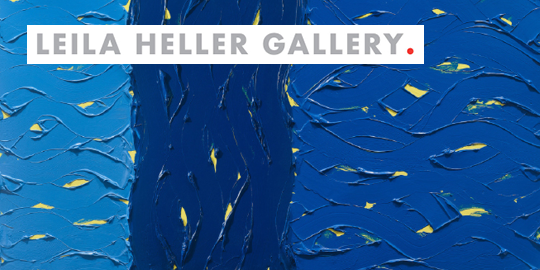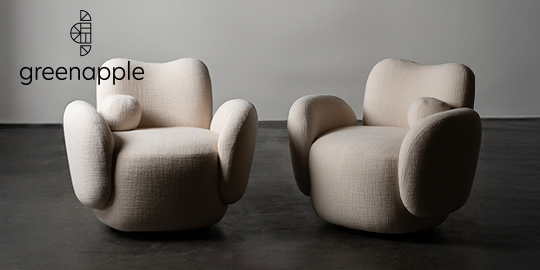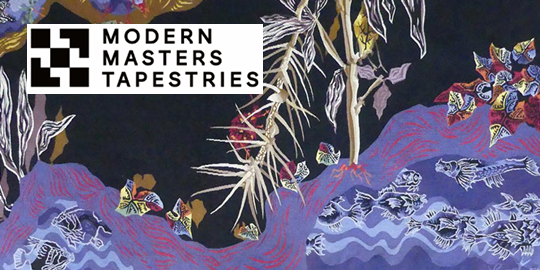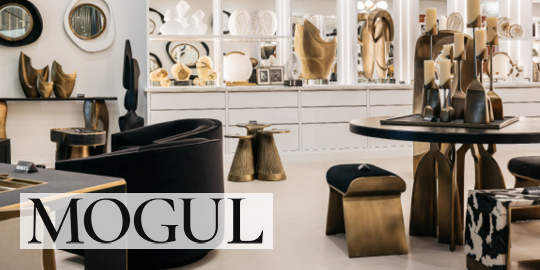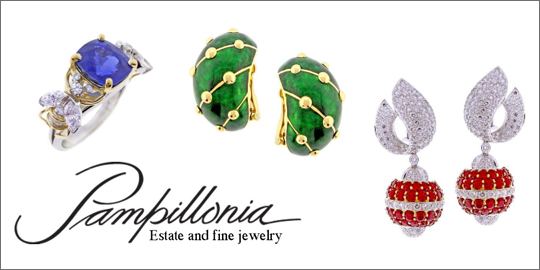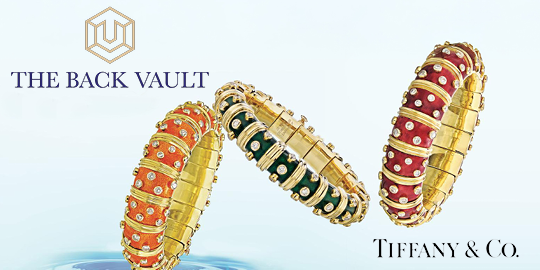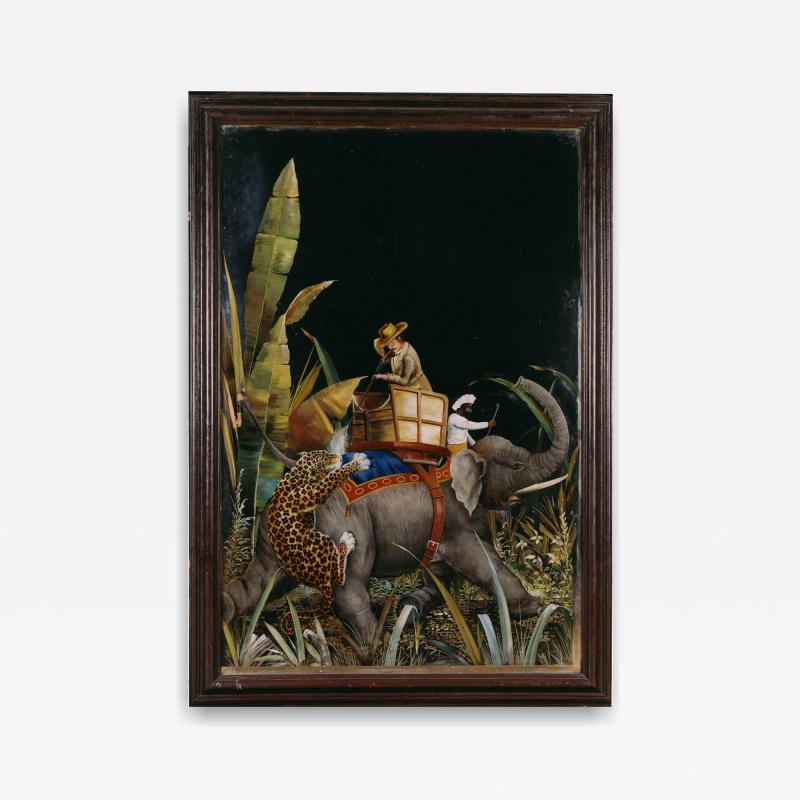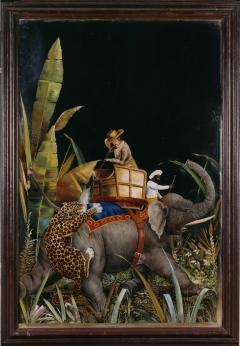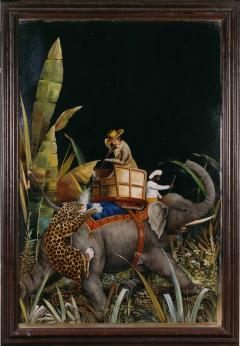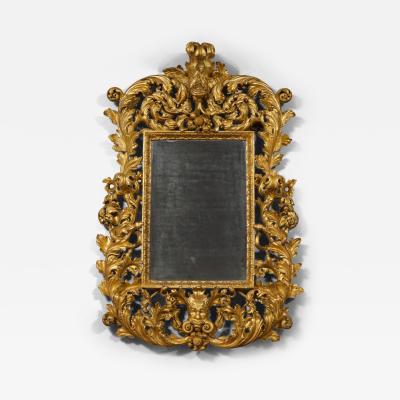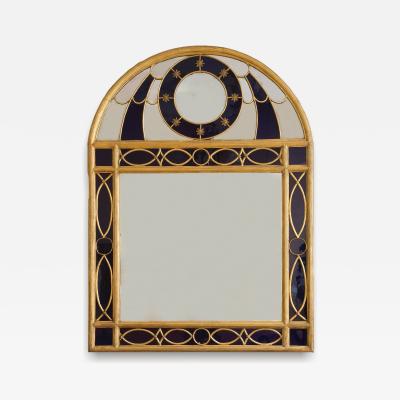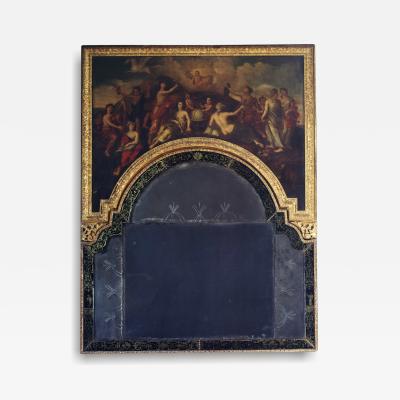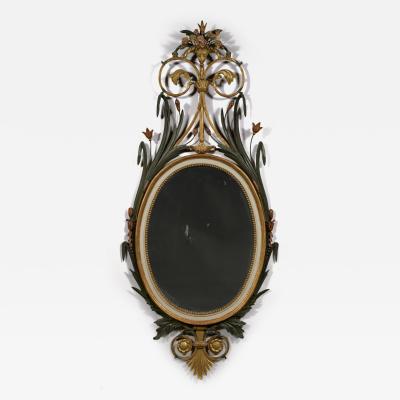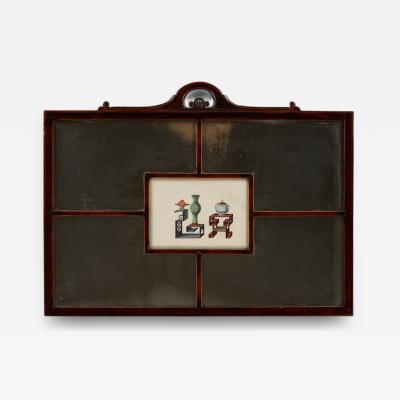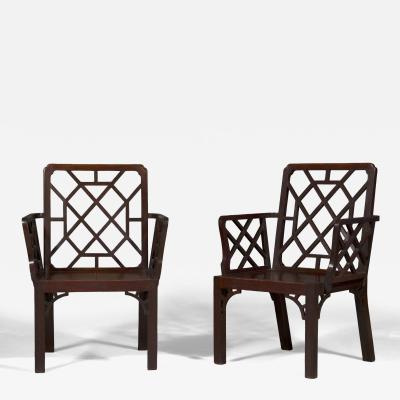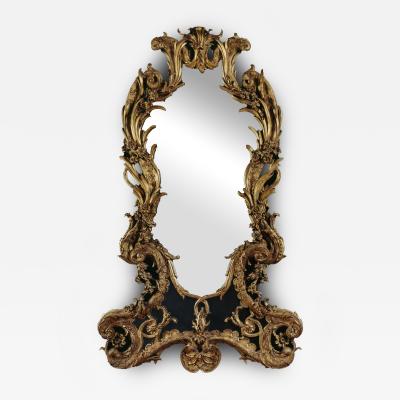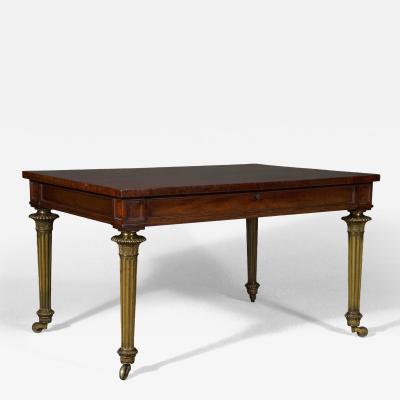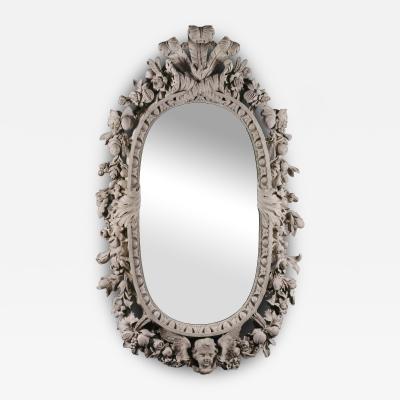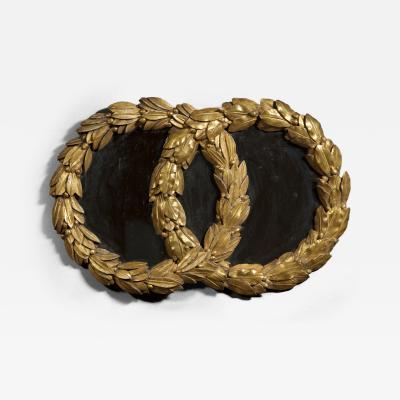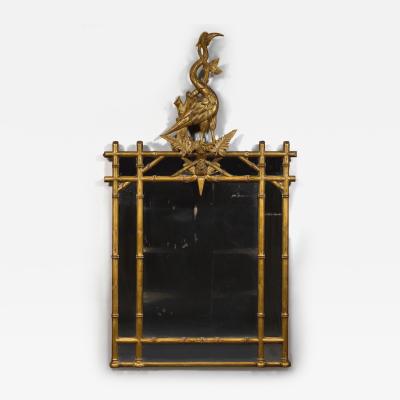RARE & VERY LARGE REVERSE GLASS PAINTED MIRROR DEPICTING AN EXOTIC HUNTING SCENE
-
Description
A RARE AND VERY LARGE REVERSE GLASS PAINTED MIRROR DEPICTING AN EXOTIC HUNTING SCENE
English. Circa 1885.
Measurements
Height: 77 1/2" (197 cm)
Width: 53 1/2" (136 cm)
Depth: 2" (5 cm)
Research
Of reverse painted glass and ebonised wood. The rectangular mirror plate inside an ebonised moulded frame, the painted scene depicting a European hunter, standing in a howdah on the back of an elephant driven by a white robed and turbaned Indian, discharging his rifle at a leopard clinging to the elephant’s rump.
Provenance:
‘The Star,’ Quarry Street, Guildford, Surrey.
This unusual mirror once hung in The Star Inn, a Victorian public house located at 2 Quarry Street, Guildford, Surrey. According to Matthew Alexander, former curator of the Guildford Museum:
“[The mirror hung] on the south wall of the Court Room at The Star, above the fireplace. The Court Room is a large function room at the rear of the premises, built in the 1840s. It took its name as the meeting room of the ‘Guildford Castle Court’ of the Ancient Order of Foresters, founded there in 1858 (the treasurer was the pub’s landlord, Jesse Boxall)…the name has led many in later years to speculate that it was used for a legal court – it never was.”1
The mirror is decorated using a technique called verre églomisé, also called ‘reverse glass painting’ or ‘back painting.’ Glass is ornamented on its underside, either by painting or gilding, and then covered by another layer of glass, varnish, or mirror plate. The technique dates to ancient Roman times, but was made popular in England through trade with the China in the 18th century. Until the technique of glass-making was improved in the East, plain glass needed to be sent from England to China and then exported back once decorated. The present mirror, however, is an interesting and later exercise in the technique completed entirely by English hands.
The scene depicted on the mirror involves an elephant driven by a mahout and carrying a Western hunter, presumably through the jungles of India, in the howdah on its back. A howdah is a carriage-like compartment strapped to the back of an elephant and was used in the 19th and early 20th centuries as a firing platform in hunting, or as a mode of transportation to carry the wealthy during British Colonial rule (figure 1a). The hunter is aiming his rifle at a of a leopard that has attacked and is clinging to the rear of the elephant.
Full research report available on request. -
More Information
Period: 19th Century Creation Date: 1885 Styles / Movements: Traditional Dealer Reference #: 9265 Incollect Reference #: 811167 -
Dimensions
W. 53.5 in; H. 77.5 in; D. 2 in; W. 135.89 cm; H. 196.85 cm; D. 5.08 cm;
Message from Seller:
Carlton Hobbs, LLC specializes in the acquisition, conservation, and research of 17th to 19th century British and Continental furniture and works of art, with a focus on pieces of exceptional merit, including royal and aristocratic provenance. For inquiries, contact 212.423.9000 or email stefanie@carltonhobbs.com.


